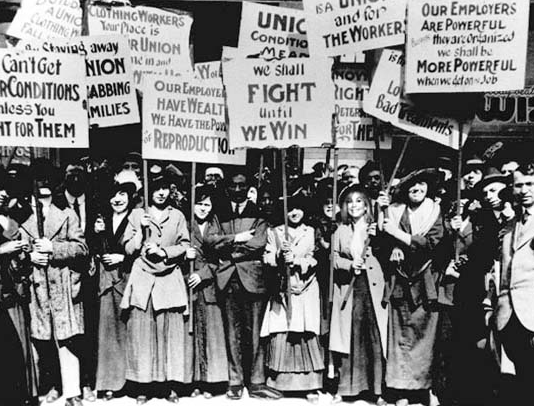Table of Contents
AWESOME ARTISTS, Sculptors, Writers, Architects, and more
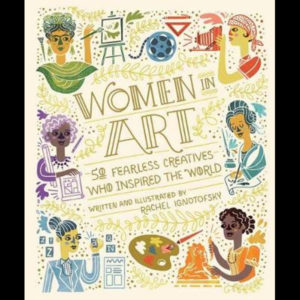
|
By Rachel Ignotofsky, Women in Art (Candlewick, 2019) is the story of “50 Fearless Creatives Who Inspired the World” – including African-American quilter Harriet Powers and Native American ceramicist Nampeyo, along with a host of painters, sculptors, photographers, and more. For ages 8-12. |
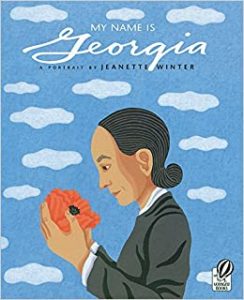
|
Jeanette Winter’s My Name is Georgia (HMH, 2003) is a picture-book biography of Georgia O’Keeffe, an independent-minded little girl who grew up to be a renowned artist. For ages 4-7.Also see Rachel Victoria Rodriguez’s Through Georgia’s Eyes (Henry Hold, 2006) for ages 4-8 and Mike Venezia’s Georgia O’Keeffe (Children’s Press, 2018) in the Getting to Know the World’s Famous Artists series for ages 6-10. |
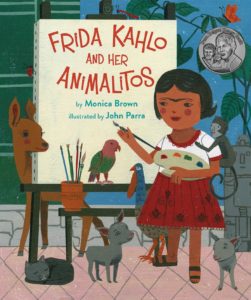
|
By Monica Brown, Frida Kahlo and Her Animalitos (NorthSouth Books, 2017) is the story of the famous Mexican artist as told through the eyes of her animal friends, among them a parrot and a pair of spider monkeys. For ages 4-8. Also see Mike Venezia’s Frida Kahlo (Children’s Press, 1999) for ages 6-10. |
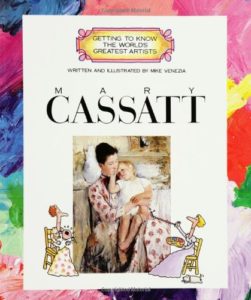 |
Mike Venezia’s Getting to Know the World’s Greatest Artists series includes Frida Kahlo (Childrens Press, 1999), Dorothea Lange (2001), Grandma Moses (2004), Faith Ringgold (2008), Mary Cassatt (2015), and Georgia O’Keeffe (2018). Clever picture-book biographies that combine photos, art reproductions, and cartoons. For ages 6-10. |
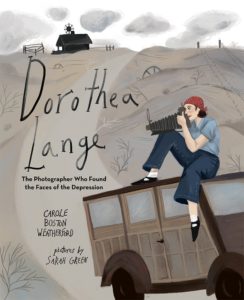
|
By Carole Boston Weatherford, Dorothea Lange (Albert Whitman, 2017) is the story of the talented photographer who documented life in the Great Depression. For ages 4-8. Also see Mike Venezia’s Dorothea Lange (2001). |
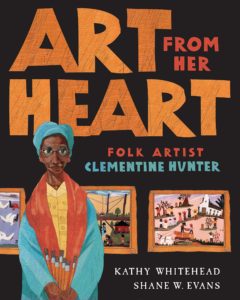
|
Kathy Whitehead’s Art From Her Heart (G.P. Putnam’s Sons, 2008) is the story of African-American folk artist Clementine Hunter, who began by painting on windowshades, frying pans, and old boards, and used to hang her paintings on the clothesline to dry. For ages 4-9. |

|
By Jeanette Winter, The World Is Not a Rectangle (Beach Lane Books, 2017) is the story of Iraqi-born architect Zaha Hadid, whose visionary designs are based on shapes and patterns found in nature. For ages 5-10. |
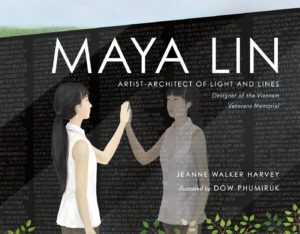
|
Jeanne Walker Harvey’s award-winning Maya Lin (Henry Holt, 2017) is a picture-book biography of the architect who designed the Vietnam Veterans Memorial Wall. For ages 4-8. Pair this one with Eve Bunting’s The Wall (Clarion Books, 1992) is which a little boy and his father visit the Vietnam Veterans Memorial, searching for the boy’s grandfather’s name. |
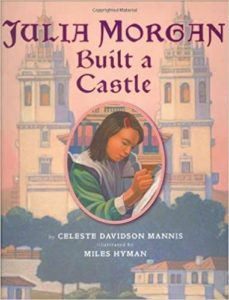
|
Celeste Davidson Mannis’s Julia Morgan Built a Castle (Viking Juvenile Books, 2006) is a picture-book biography of the woman who was the first to study architecture in Paris (at the then all-male École des Beaux-Arts) and the first licensed woman architect in California. Included is the story of Julia’s most famous project, the design and building of Hearst Castle. For ages 6-10. |
| For many more resources, see Architecture. | |
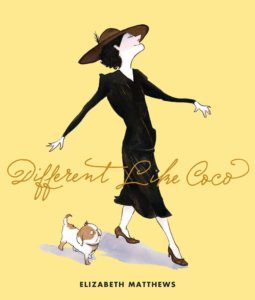
|
By Elizabeth Matthews, Different Like Coco (Candlewick, 2007) is the story of Coco Chanel, a skinny spunky orphan who used her brains and talent to become a famous fashion designer. For ages 6-10. |
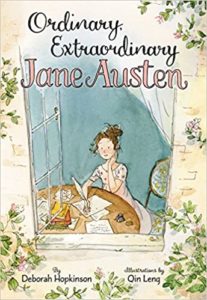
|
Deborath Hopkinson’s Ordinary Extraordinary Jane Austen (Balzer + Bray, 2018) is subtitled “The Story of Six Novels, Three Notebooks, a Writing Box, and One Clever Girl.” A charming picture-book biography of the author of Pride and Prejudice for ages 4-8. |
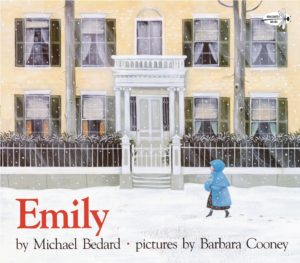
|
In Michaed Bedard’s delightfully illustrated Emily (Dragonfly Books, 2002), a little girl gets a chance to meet her neighbor, the reclusive poet Emily Dickinson, and receives a poem of her own (included in the book). For ages 4-8. |
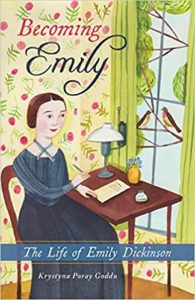 |
By Krystyna Poray Goddu, Becoming Emily (Chicago Review Press, 2019) is a biography of poet Emily Dickinson for ages 10 and up. |
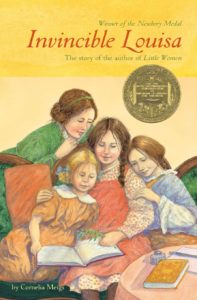 |
By Cornelia Meigs, Invincible Louisa (Little, Brown, 1995) is a biography of Louisa May Alcott, author of Little Women. A Newbery Medal winner for ages 8-12. |
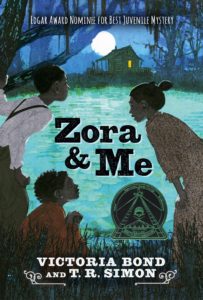
|
By Victoria Bond and T.R. Simon, Zora & Me (Candlewick, 2011) is a fictionalized coming-of-age story of young Zora Neale Hurston, whose creative talent sometimes blurs the truth between fiction and real life in her small Florida town. A winner of the John Steptoe Award. Included is an annotated bibliography of Hurston’s works, a short biography of the author, and a timeline. A great read for ages 8-12. Also see the sequel, Zora & Me: The Cursed Ground (2018). |
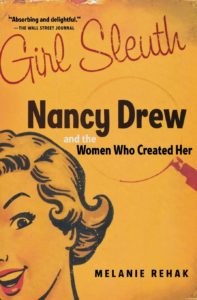
|
Amateur detective Nancy Drew solved her first mystery in 1930 (The Secret of the Old Clock) and today she’s still going strong. Melanie Rehak’s Girl Sleuth: Nancy Drew and the Women Who Created Her (Mariner Books, 2006) is the story of the Stratemeyer syndicate and the way in which Nancy became a feminist heroine. For teens and adults.
For ages 8-12, check out the dozens of Nancy Drew mysteries. They’re supposedly written by Carolyn Keene. |
SENSATIONAL SPORTS
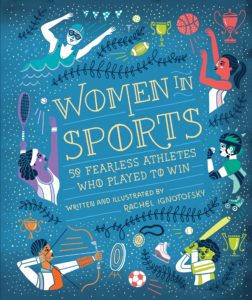
|
Rachel Ignotofsky’s Women in Sports: 50 Fearless Athletes Who Played to Win (Candlewick, 2017) is a creatively designed collective biography of women athletes from the 19th century to the present day. For ages 8-12. |
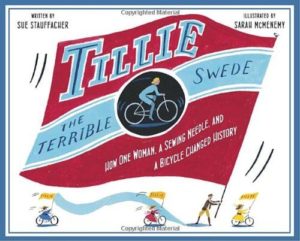
|
Sue Stauffacher’s Tillie the Terrible Swede (Knopf Books for Young Readers, 2011) is the story of Tillie Anderson, who came to America with nothing but a needle and ended up a bicycle champion. (“Bicycles aren’t for ladies,” Tillie’s mother reminded her. But Tillie wasn’t listening.) For ages 5-9. |
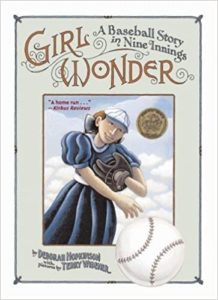
|
Deborah Hopkinson’s Girl Wonder (Aladdin, 2006) is the picture-book story of Alta Weiss who – despite many objections – wangled a place as pitcher for the all-male Vermilion Independents in 1907. Soon she was the star of the team and people flocked to see the “Girl Wonder.” Told in the first person, this is a delightful read. An appendix includes a biography of Weiss and a timeline of women in baseball. For ages 5-9. |
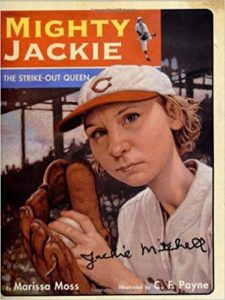
|
Marissa Moss’s Mighty Jackie: The Strike-Out Queen (Simon & Schuster, 2004) is the picture-book story of Jackie Mitchell, 17-year-old pitcher for the Chattanooga Lookouts, who – in an exhibition game in 1931 – struck out both Babe Ruth and Lou Gehrig. (She won the day, but women were still banned from professional baseball.) For ages 5-9. |
| For more books and resources, see Baseball. | |
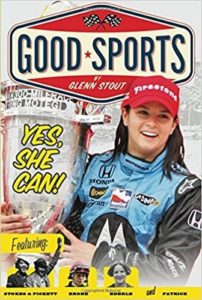 |
Glenn Stout’s Yes, She Can! (Sandpiper, 2011) is a collective biography of women sports pioneers, from Gertrude Ederle, the first woman to swim the English Channel, to Danica Patrick, the first woman to race in the Indy 500. For ages 10 and up. |
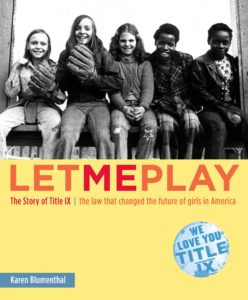
|
Karen Blumenthal’s Let Me Play: The Story of Title IX (Atheneum Books for Young Readers, 2005) is an illustrated history of the crucial law that banned sex discrimination in education and gave women equal access to athletics, college admissions, scholarships, and classes. An eyeopener for ages 12 and up. |
